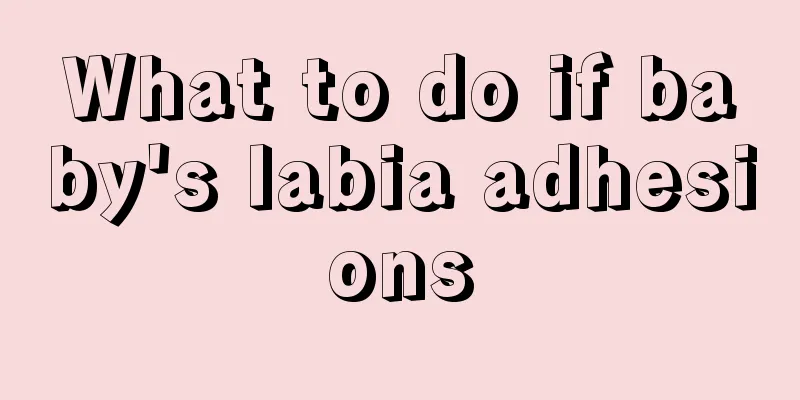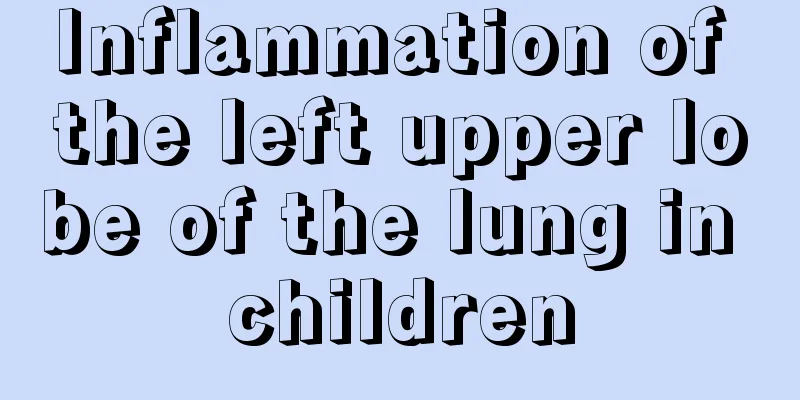What to do if baby's labia adhesions

|
Infant labia adhesion is a common disease in our lives. Because parents do not know much about this disease, they do not know what to do. They are more worried about whether it will affect the normal development of the child. After the occurrence of labia adhesion, the child is likely to have difficulty urinating and other phenomena. So let us take a look at what to do if infant labia adhesion occurs? Labia minora adhesion is a common vulvar disease in infants and young children, especially in girls under 5 years old. This is mainly due to poor cleaning. The epithelium of the labia minora is thin and tender, which is susceptible to various infections and abnormal stimulation and is prone to exudation. Over time, the labia minora on both sides will adhere together. Labia minora adhesions in infants and young children are closely related to poor hygiene conditions. During infancy, the vagina is long and narrow, the epithelium has no wrinkles, the cells lack glycogen, the vagina is low in acidity, the resistance to infection is weak, and inflammation is prone to occur. If you do not pay attention to hygiene and do not wash after urination and defecation, it is very easy to cause local infection and lead to vulvitis and vaginitis. If the acute phase is not treated properly or is ignored by parents, it can easily lead to adhesion of the labia minora. Adhesions do not necessarily require surgery. It depends on the severity of the adhesion. In fact, labia adhesions do not necessarily require surgery. The treatment method depends on the thickness of the adhesion tissue. If it is a relatively thin membrane-like adhesion and the adhesion line is visible in the middle, apply estrogen or chloramphenicol ointment 1-2 times a day, and then use the thumbs of both hands to gently and slowly pull the left and right labia majora apart to the sides. After a few weeks, the labia minora can be separated. Doctors remind that if the baby's labia minora is adhered, clean the vulva with clean water, scrub it with 0.5% iodine tincture, spray 2% lidocaine locally after disinfection, and then use your fingers to bluntly separate the adhered labia minora downward and outward. After separating the adhered parts, scrub the local area with 0.5% iodine tincture. If there is a small amount of bleeding, apply pressure to stop the bleeding, and cover the separation surface with disinfected vaseline gauze to prevent re-adhesion. Scrub with iodine tincture twice a day, and the child will recover after 6 days. Pediatric expert Xia Kaili said that if the baby's labia minora are adhered, do not perform surgery to separate them easily! The vagina is close to the anus and is susceptible to bacterial infection, which is the main cause of vulvitis in infants. Do not ignore the fact that the baby's lack of estrogen leads to poor vulva development and thin vaginal mucosa with low resistance. So if the labia minora are found to be adhered, use antibiotics and estrogen ointment topically under the guidance of a doctor. It will not affect the baby's growth and development. Most labia minora can be separated to avoid unnecessary surgical injuries. Now that we understand what to do if labia adhesion occurs in babies? After this question, parents should be reminded that labia adhesion can be prevented by paying attention to the children's hygiene when they are young, cleaning their vulva more often, and being careful not to let them wear open-crotch pants. If there are any abnormalities, they must go to the hospital for treatment in time. |
<<: What should I pay attention to when my 1-year-old baby has bronchial pneumonia?
>>: What causes diaper dermatitis in newborns?
Recommend
What are the symptoms of enlarged tonsils in children?
Young children's immunity is relatively imper...
What should I do if my child has long-term indigestion? These methods are very effective
If a child suffers from indigestion for a long ti...
Why does a child walk with his feet turned outward?
Compared with children who walk with their feet t...
What to do if your child has eye bags
When children have eye bags, many adults don’t kn...
How long does it take for a child to talk and walk?
After a child is born, parents are very concerned...
What to do if your 7-month-old baby cries while sleeping at night
Babies of different ages will have many problems,...
What are the best treatments for acute laryngitis in children?
Many people think that acute laryngitis will not ...
What can’t babies with rhinitis eat? Avoid these foods
If your baby is infected with rhinitis, you need ...
What to do if your child has an upper respiratory tract infection and coughs
If a child has an upper respiratory tract infecti...
What are the prevention methods for hernia in children?
Nowadays, children are the treasures of every hou...
What to do if your child swallows a coin
Children have no sense of danger. They are just v...
The child has a severe heart murmur
The severity of a child's heart murmur needs ...
Is patent ductus arteriosus normal in newborns?
Patent ductus arteriosus is a common congenital h...
How big is a baby's stomach?
Sometimes babies spit up milk, sometimes because ...
Can children take vitamin B2?
Vitamin B2 is an essential nutrient for the human...









